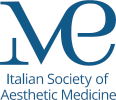Article
The use of technology in healthcare is constantly growing, and there are many fields in which software and mobile apps play an important role, both in the surgical planning and clinical management of patients. These in fact, improve accessibility to a given treatment pathway, making it possible to accelerate its timing, thereby optimizing the effectiveness of the various interventions. The future of medicine is increasingly taking shape, so keeping up with these advances is imperative.
Plastic surgery at this juncture presents a multitude of scenarios adjuvant to technology, especially in surgical planning. A good example of this is in autologous breast reconstruction procedures, where, depending on the reconstructive technique proposed by the surgeon, the use of free software such as www.braflap.com including the Breast-V, LD-V and FALD-V applications allows to carry out a correct pre-operative assessment and an appropriate selection of patients through the acquisition of simple anthropometric measurements 1-3. These platforms allow the use of different tools based on the reconstructive technique proposed and established on specific algorithms that elaborate a predictive pre-operative formula in order to estimate the outcome and optimize the surgical time. For instance, the LD-V which, only on the basis of the patient’s BMI and skin paddle width, provides an estimate of the volume of the Latissimus Dorsi flap to be set up and therefore of the volume that can be reached by the reconstructed breast, allowing to plan the whole operation also in terms of symmetrization, while in the case of the FALD-V, it allows to know pre-operatively the exact amount of fat that can be infiltrated into the flap in order to achieve a one-stage autologous breast reconstruction 4,5. This has an important impact both in terms of cost, as it allows a targeted harvest of the adipose tissue necessary to obtain the defined volume, thus cutting operating times related to the harvesting and processing of adipose tissue that later proves to be unnecessary and consequently avoiding the waste of materials otherwise used. It also has an important impact in terms of patients’ risks, who does not have to undergo further liposuction or lipofilling procedures that could also compromise the correct flap perfusion.
The complexity and the variety of plastic surgery also fits well with the field of deep learning and machine learning, a subset of artificial intelligence, that can be explained as a collection of models and techniques that can automatically detect patterns in massive amounts of data, extract information, and use it to perform various kinds of decision-making under uncertain conditions. By identifying patient cohorts that will benefit from surgery prior to treatment, machine learning can help surgeons make clinical decisions more quickly 6, and also particularly well suited for high fidelity, unstructured visual and audio data that is difficult to analyze using traditional statistical methods 7.
This technology has the potential to provide clinically relevant information across many areas of plastic surgery. In burn surgery, machine learning has been used to predict whether complete wound healing will require more or less than 14 days with an accuracy rate of 86% by using a non-invasive portable spectrophotometer based on optical data from reflected spectra in the visible to near-infrared regions 8. In the field of microsurgery, researchers have been able to predict surgical site infections following free flap reconstruction in head and neck cancer with a sensitivity of 81% and specificity of 61% through using artificial intelligence neural networks 9.
Further, deep learning has also been applied in wound care research, where thanks to the development of an app, it is possible to present evidence-based guideline recommendations to prevent and to treat pressure ulcer at the bedside 10.
In conclusion, one can see how the role of digital tools is constantly and rapidly changing fields that in the near future will see numerous new further applications that will play a key role in the advancement of many areas of plastic surgery and will enable a true revolution in medicine as a whole that we are already witnessing.






 PDF
PDF
